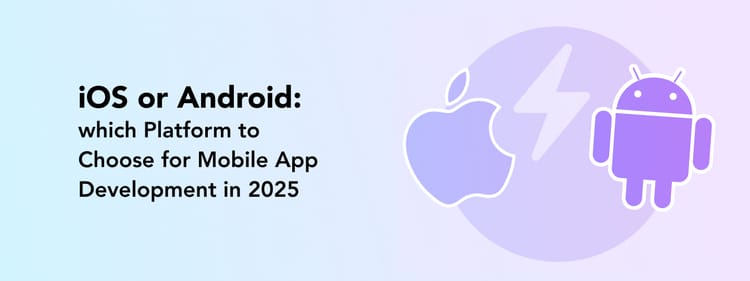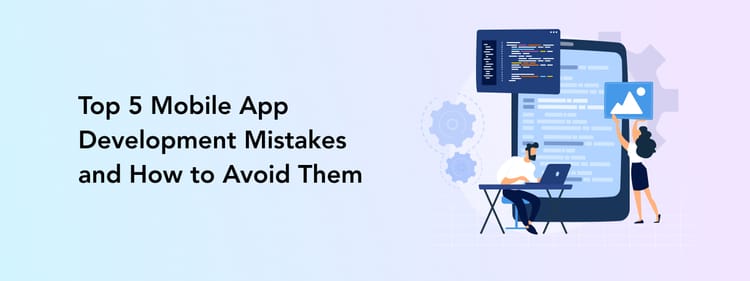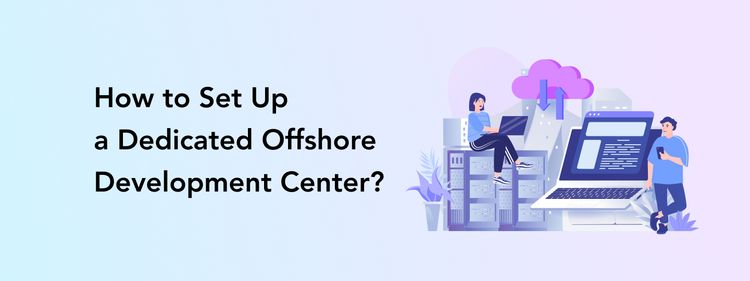With outsourcing being one of the best approaches to mobile app development, many business owners are considering collaborating with an offshore company for creating their product. That’s a great idea as outsourcing an app development project means flexibility, cost-effectiveness, and access to a wider pool of professionals specializing in your industry.
The only question left might be “Which collaboration model should I go for?” We have already discussed a highly popular dedicated team model for full cycle app development. This time, let's take a closer look at a no less common time and materials model in app development.
What is the time and materials model?
The time and materials outsourcing model is an approach to mobile app development when a client pays for each hour a certain specialist dedicates to their project. In other words, the t&m outsourcing model means that you, as an app owner, decide which specialists you need for completing your project and which tasks they should undertake, and then pay the final price based on the specialist’s hourly rate and the time spent on completing certain tasks.
The t&m model for app development offers a level of flexibility like no other collaboration model. It is up to you which specialists should be involved in the project and the speed of the mobile app development process. For example, you might only need to hire a developer to work with your app design or collaborate with a QA specialist for testing too. What are some other advantages of the time and material pricing model for app development?

Pros and Cons of the Time and Materials Model for App Development
Let’s take a look at the factors that make time & materials a top choice for many startups and companies.
Adaptability
As we have mentioned above, a time and material contract for app development gives company owners a great level of flexibility as compared to, let’s say, fixed price model. There are few limitations when it comes to the team composition, project duration, number of tasks, or process organization. Want someone to turn your wireframes into a beautiful UI — done, just collaborate with a designer who can finish this task. Already have a ready UI//UX design but looking for someone to develop the product — there is definitely a suitable programmer who can take care of it.
Each task is defined separately, so there is no problem taking a break before starting with the next stage, adding extra specialists along the way, or coming up with new functionality later on. The development process in the time and material app development model is highly adaptable, making it perfect if you don’t have exact requirements or a clear vision of the final product.
You decide on the project scope and timeline
When it comes to time and material app development model, you are the boss more than ever. While the app development team you are collaborating with will help you with task estimations and defining the project scope, it is still up to you how to distribute task completion and how many hours weekly should a specialist dedicate to your project. As a result, you can regulate the deadlines, budget, and workload as it suits you.
Transparent process
The time and material model in application development is very transparent as a client receives detailed reports on task completion and has access to all the work tools. Before signing the contract, you will discuss which reporting methods work for you and how often you want to receive updates on the work progress.
Usually, clients have daily or weekly meetings with the specialists to give tasks and check progress, join a chat with them, and review the hourly reports in project management tools. A team member working on your project will log each hour of work on a specific task, so you can clearly see what you are paying for.
While the t & m model for application development is convenient and suitable for many, it is not perfect. What are some possible limitations of this approach?
High level of involvement
Having a rather high degree of control over the work process is both an advantage and disadvantage. On the one hand, as a product owner, you have lots of choices to make and flexibility to organize the work according to your needs and restrictions. On the other hand, there is a price to pay for such freedom. You have to spend a decent amount of time overlooking the project, giving instructions on the tasks, and reviewing the work, so be prepared to dedicate some extra hours to the project management if you decide to go with the time and material contract for application development.
Harder to get the bigger picture
Because every specialist you hire works independently on separate tasks, it might be harder for them to get a bigger picture of the result you want to achieve. It will be up to you and the team’s manager to ensure communication between the specialists, let’s say a UI/UX designer and developer so that there are no bumps in the project development process.
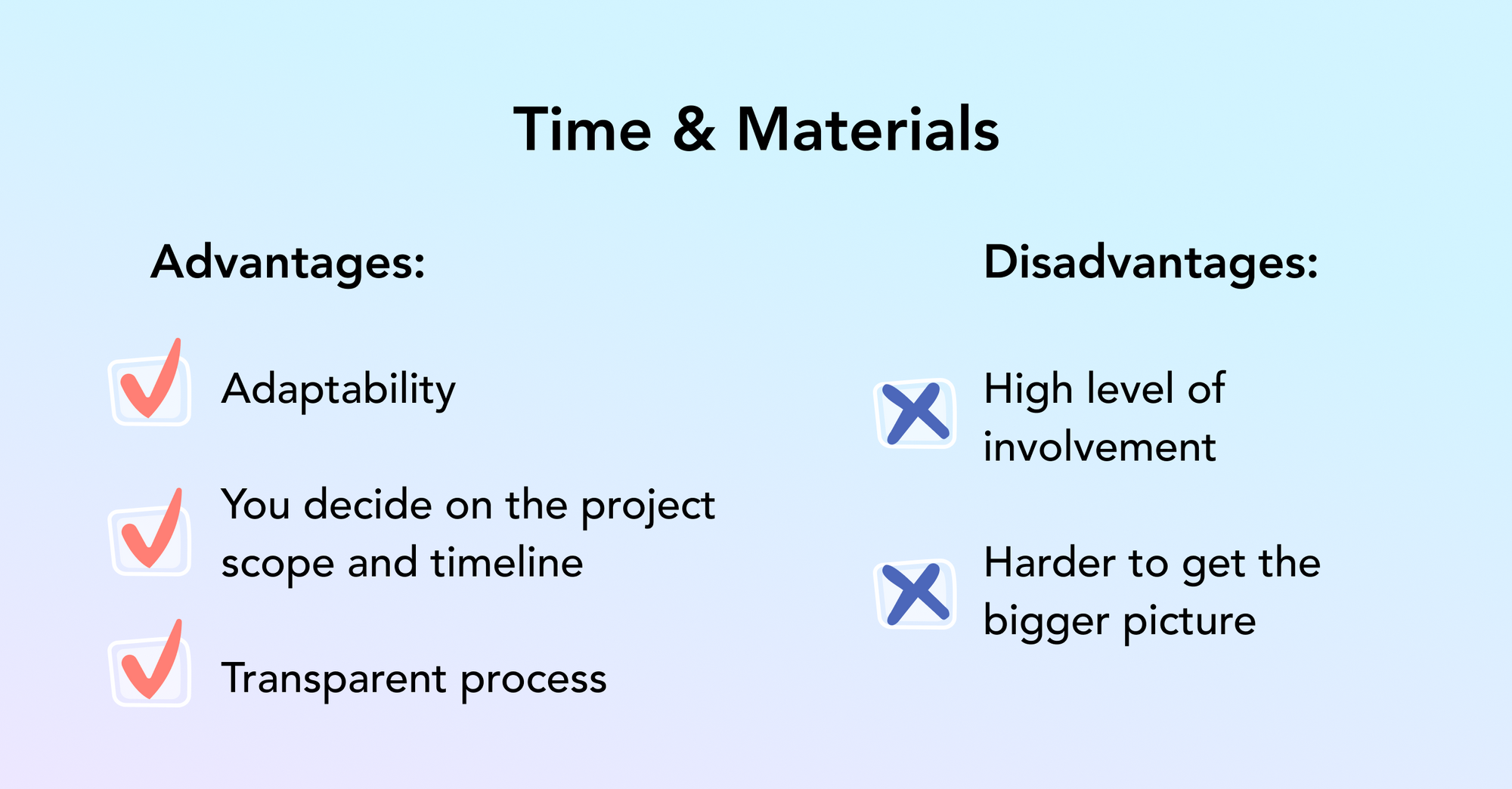
How Does Time and Materials Model Work in Outsource App Development
Suppose the time and materials model looks like a perfect match for your project. What is the process lying ahead of you?
Choose a reliable development team
Your first step should be selecting specialists you can trust with the project. Depending on the work scope, you might need only one professional or several specialists in different domains. One way or another, it’s best to collaborate with an outsourcing team that can sign a contract with you and ensure a reliable collaboration. You can find a team online, on such platforms as GoodFirms, Clutch, and LinkedIn. Don’t forget to read reviews about the team across different websites and check out the completed cases in your domain.
Set clear tasks and receive a time estimate for each one
An outsourcing team of your choice will likely assign you a sales manager with whom you are to discuss the services you need. This specialist will help you define each separate task and consult on the time estimate needed to complete those. As a result, you will receive a project estimate with clear milestones and deadlines. Of course, because time & materials is a highly flexible model, later on you can adjust the workload and add more assignments for the team.
Decide on the specialists
Depending on the type of services you need, the number of specialists working on your project will differ. For example, you might need separate iOS and Android developers if you are to go with the native mobile app development or just one Flutter developer if you choose a cross-platform approach. You will have a chance to review the CV and portfolio of each team member suggested by the outsourcing company and conduct an online interview.
Regularly review the completed work
After you decide on the specialists who will take care of your project and kick off the completion of the first tasks, it’s time for you to sit back and keep an eye on the progress. Surely enough, if you signed a contract with a reliable company, there is nothing to worry about in terms of deadlines completion and quality. Still, you will feel more confident regularly reviewing the work and knowing that the final result will be as you expected.
Get a result in a discussed timeframe and according to your budget
And that’s it! You will receive completed work according to the deadline written out in your contract. Usually, you are to pay for the work hours at the end of a certain period, most likely monthly. Alternatively, if your tasks are short-term, you might receive an invoice at the end of the collaboration. You will have time estimates in the contract but remember that those might be adjusted in the process (after agreeing with you, of course).
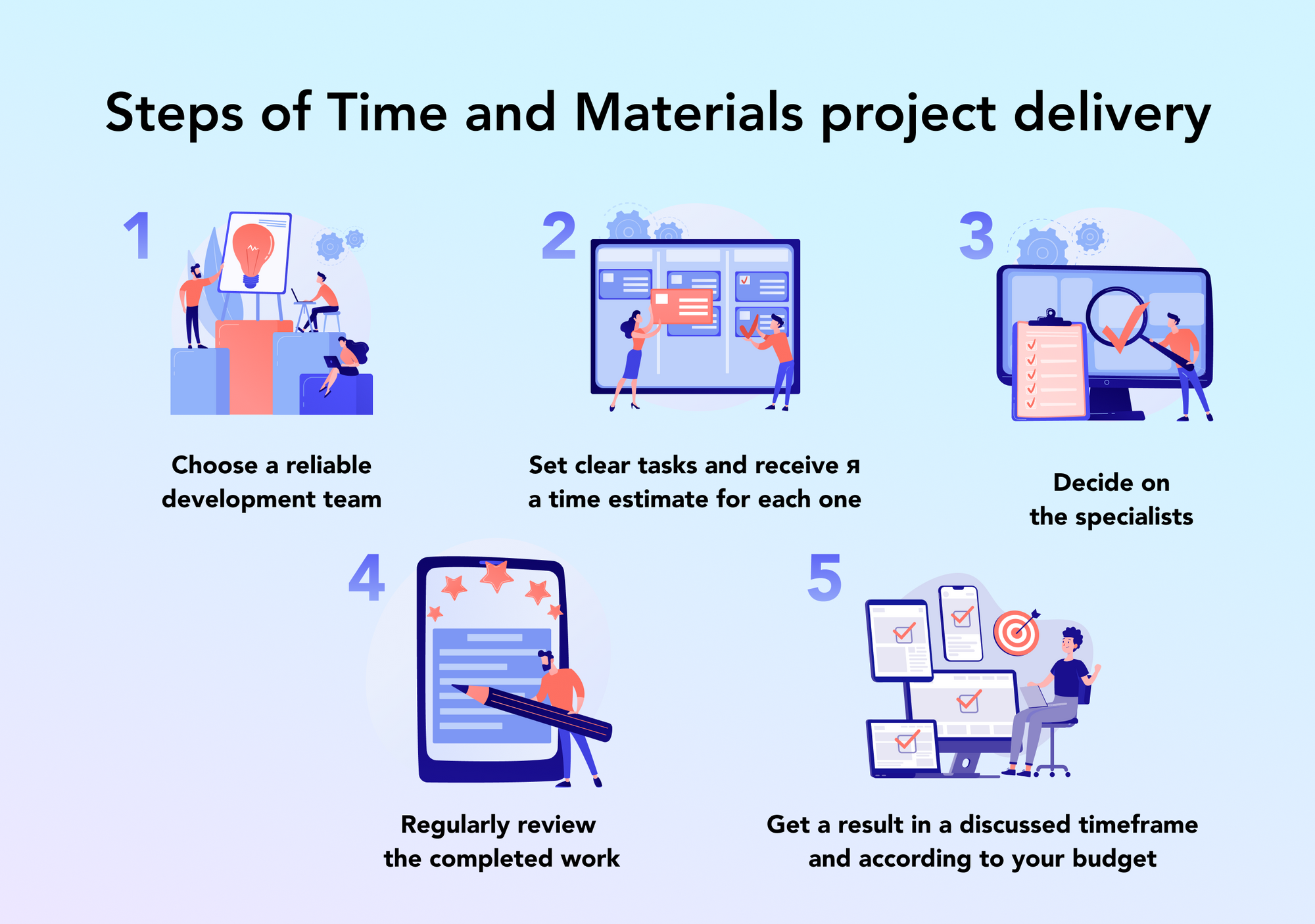
Consider Perpetio Your Trusted Partner
The time & materials model is popular among our clients. Along with the dedicated team approach, the time & materials model is a common choice we discuss with the potential clients when deciding on the collaboration model. For example, one of our recent projects, eargym is completed as a time & materials project with the Flutter app development services and testing. As this project was for developing a redesigned app, a dedicated team was not necessary and a time & materials model fitted perfectly.
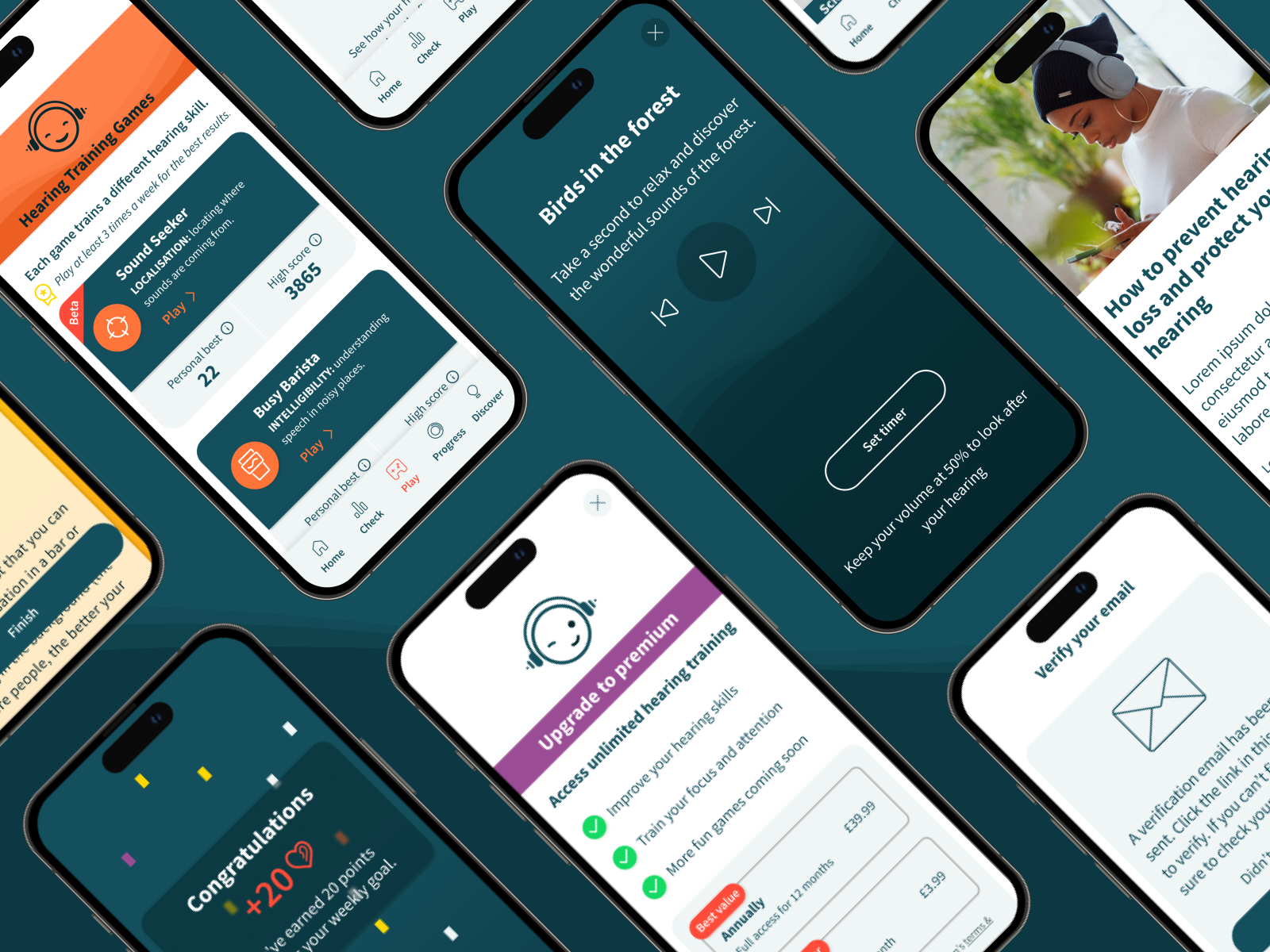
Final Thoughts
Choosing a suitable collaboration model is a significant part of the project’s success. It defines the work timeline, team dynamics, adaptability to requirement change, and budget. The time and materials model is for those projects that need only a certain stage of an app development cycle completed or don’t have a clear requirement set, meaning they are open to changes.
FAQ
What is the time and materials model?
The time and materials outsourcing model is an approach to mobile app development when a client pays for each hour a certain specialist dedicates to their project.
What are the pros and cons of time and material model?
The pros of the time and material model include adaptability, you deciding on the project scope and timeline, and a transparent process. As for the cons, these can be a high level of your involvement and problems with getting a bigger picture.
When to use the time and material model?
The time and materials model is for those projects that need only a certain stage of an app development cycle completed or don’t have a clear requirement set, meaning they are open to changes.
How does the time and material model work in outsource app development?
Time and material workflow includes choosing a reliable development team, setting clear tasks and receiving a time estimate for each one, deciding on the specialists, regularly reviewing the completed work, and getting a result in a discussed timeframe and according to your budget.



